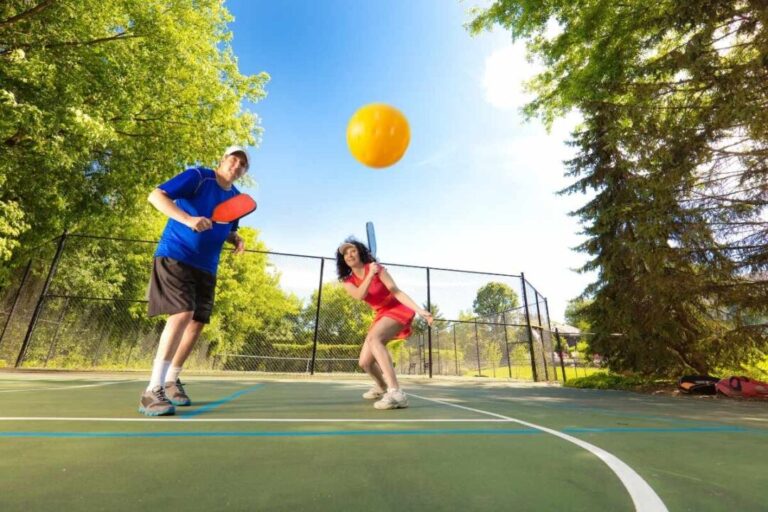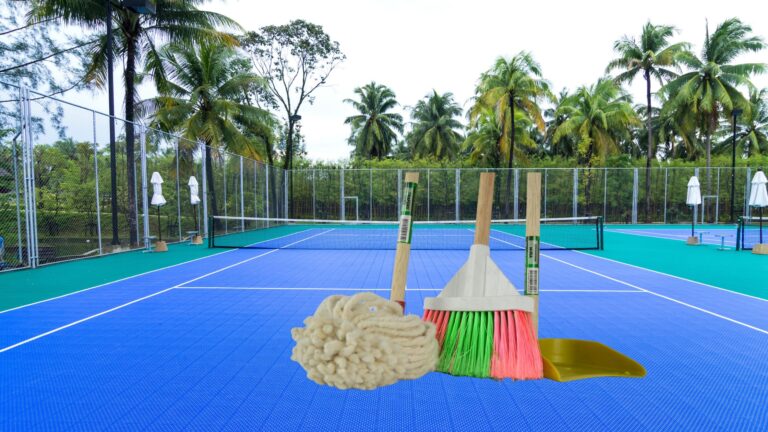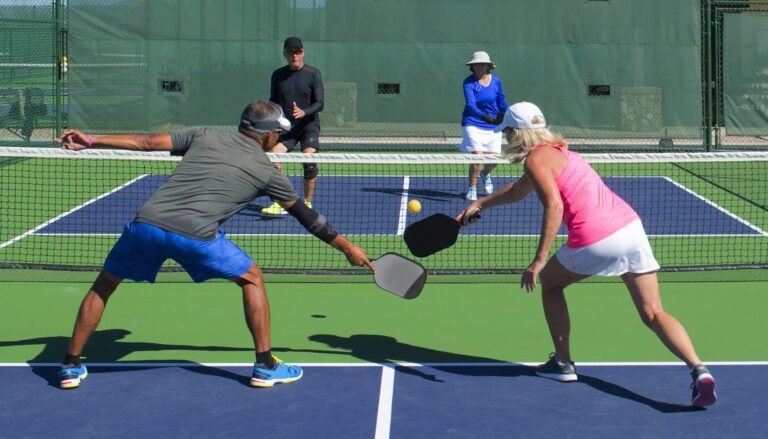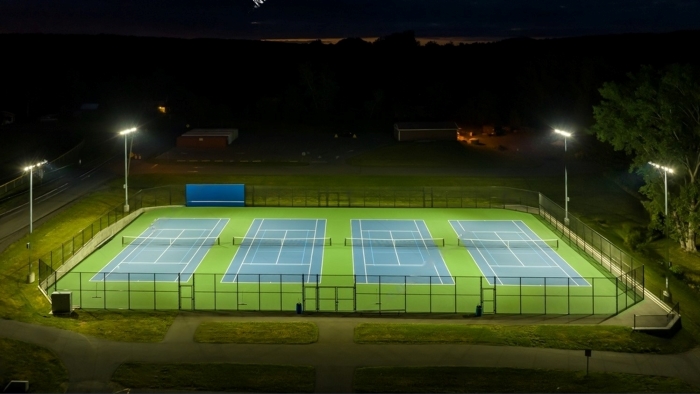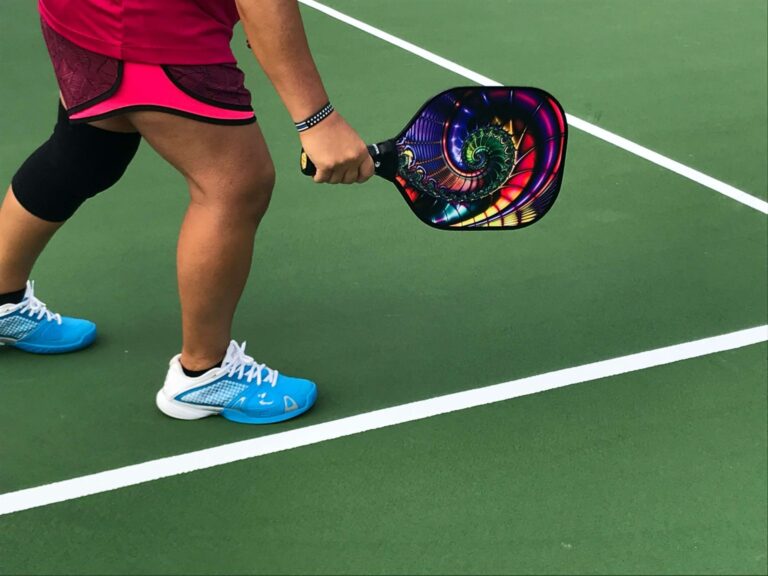What is a Legal Serve in Pickleball? Mastering the Rules and Techniques
what is a legal serve in pickleball ?
A legal serve in pickleball must be hit underhand, with the paddle making contact with the ball below the server’s waist (navel level). The server must stand behind the baseline, with at least one foot behind the line, and serve diagonally crosscourt to the opponent’s service court. The ball must clear the net and land within the confines of the diagonal service court. Key aspects of a legal serve include the underhand serving motion, paddle contact below the waist, proper foot positioning behind the baseline, and serving diagonally crosscourt. Failing to adhere to these rules results in a fault and loss of serve.
Key Takeaways:
– A legal serve in pickleball must be hit underhand, with the paddle contacting the ball below the server’s waist.
– The server must stand behind the baseline, with at least one foot behind the line, and serve diagonally crosscourt.
– The ball must clear the net and land within the confines of the opponent’s diagonal service court.
– Common serving faults include overhand serves, paddle contact above the waist, foot faults, and serving to the wrong court.
– Pickleball has two main serving styles: the volley serve and the drop serve, each with its own advantages.
– Mastering the legal serve is crucial for gaining an advantage and setting the tone for the rally in pickleball.
The Essentials of a Legal Serve in Pickleball
Before we get into the nitty-gritty details, let’s define what a legal serve in pickleball actually is. In a nutshell, a legal serve must be:
- Hit underhand
- Struck below the waist
- Served diagonally crosscourt
- Cleared over the net and landed in the opponent’s service court
Now, let’s break down each of these components in more detail.
Serving Motion
One of the most important aspects of a legal serve is the serving motion. In pickleball, serves must be hit underhand. This means that the paddle must be swung in an upward arc, starting below the waist. For beginners, it can be helpful to think of the serving motion as similar to bowling or throwing a horseshoe.
When serving, your paddle and the ball should be held together in front of your body, typically around waist height. As you swing, your arm will naturally extend forward and up. It’s crucial that you maintain this underhand motion throughout the serve. Accidentally slipping into an overhand motion is a common fault that can cost you points.
Paddle Contact
Another key factor in a legal serve is the point of paddle contact. The rules state that you must hit the ball below your waist, which is typically defined as navel level. Additionally, your paddle head must be below your wrist when you make contact with the ball.
It’s important to note that the ball must be struck in an upward motion. Hitting down on the ball, even if your paddle starts below your waist, is not considered a legal serve. This rule is in place to prevent players from gaining an unfair advantage by hitting powerful, downward-angled serves.
Footwork and Serving Position
Proper footwork and positioning are also crucial for executing a legal serve. When serving, you must stand behind the baseline, with both feet (or at least one foot) behind the line. Your feet must not touch the baseline or the court until after you’ve made contact with the ball.
Many players make the mistake of stepping on or over the baseline during their serve, which is known as a foot fault. This can be an easy fault to commit, especially when you’re focused on your serving motion. To avoid foot faults, try to develop a consistent serving routine that includes a moment to check your foot placement before you serve.
Serve Direction & Placement
The final piece of the legal serve puzzle is the direction and placement of your serve. In pickleball, serves must be hit diagonally crosscourt, from your service court to your opponent’s service court. The ball must clear the net and land within the lines of the diagonal service court.
While the rules dictate the general direction of your serve, you still have some flexibility when it comes to placement. Strategically placing your serves can help keep your opponents on their toes. For example, serving deep into the court can push your opponent back, while serving closer to the sidelines can force them to move laterally. Mix up your serve placement to make it harder for your opponents to anticipate and return your serves effectively.
Understanding the Two Serving Styles
In pickleball, there are two main serving styles: the volley serve and the drop serve. Each style has its own unique characteristics and advantages. Let’s take a closer look at both.
The Volley Serve
The volley serve is the more traditional serving style in pickleball. With a volley serve, you hit the ball out of the air, without letting it bounce. The motion is similar to a tennis serve, but remember, in pickleball, the serve must be hit underhand.
To execute a volley serve, start with the ball and paddle held together in front of your body. Then, gently toss the ball up into the air in front of you, typically around head height. As the ball descends, step forward with your opposite foot (left foot for right-handed players) and swing your paddle in an underhand motion, making contact with the ball in front of your body.
Volley serves can be a good option when you want to maintain a quick pace of play, as they allow you to move directly into your next shot after serving. They also give you more control over the ball, as you’re not relying on a bounce before hitting.
The Drop Serve
The drop serve is a newer addition to the pickleball serving repertoire, but it’s quickly gaining popularity. With a drop serve, you drop the ball onto the court and hit it after it bounces, rather than hitting it out of the air.
To perform a drop serve, start with the ball and paddle held together in front of your body. Then, drop the ball from around waist height, letting it bounce on the court in front of you. As the ball rises from the bounce, step forward and swing your paddle in an underhand motion, striking the ball after it has bounced.
Drop serves can be advantageous because they allow you to generate more power and spin on the ball. The bounce gives you more time to set up your shot and can help you create a more consistent serving motion. However, drop serves do require a bit more coordination and timing than volley serves.
Common Serving Faults to Avoid
Now that we’ve covered the essentials of a legal serve and the two main serving styles, let’s discuss some common serving faults that you’ll want to avoid. These faults can result in a loss of a point, so it’s important to be aware of them and work on eliminating them from your game.
- Serving with an overhand motion: Remember, serves must be hit underhand. Accidentally slipping into an overhand motion, even if you make contact below the waist, is a fault.
- Paddle contact above the waist: Your paddle must make contact with the ball below your waist (navel level). Hitting the ball above this point is a fault.
- Foot faults: Stepping on or over the baseline before hitting your serve is a foot fault. Make sure to keep your feet behind the line until after you’ve made contact with the ball.
- Serving directly across the net: Serves must be hit diagonally crosscourt. Serving straight ahead, directly across the net, is a fault.
- Hitting the ball into the net or out of bounds: For a serve to be legal, it must clear the net and land within the diagonal service court. Serves that hit the net or land outside the service court are faults.
- Serving to the wrong court: Make sure you’re serving to the correct service court. Serving to your opponent’s non-diagonal service court is a fault.
- Serving before the receiver is ready: The receiver must be ready and have a fair chance to return the serve. Serving before your opponent is ready is a fault.
The Double Bounce Rule and Its Relation to Serves
One important rule to understand in pickleball is the double bounce rule, also known as the two-bounce rule. This rule states that the ball must bounce once on each side of the court before players can hit a volley (hit the ball out of the air).
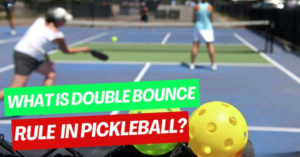
In relation to serves, this means that the serve must bounce in the receiver’s service court before they can return it. After the receiver returns the serve, the serving team must also let the ball bounce before hitting it. Only after these two bounces (one on each side) can players start volleying the ball.
The double bounce rule is designed to give the receiving team a fair chance to return the serve and prevent the serving team from gaining an immediate advantage. It’s important to keep this rule in mind when serving and receiving, as violating it can result in a fault and loss of a point.
Additional Tips for a Great Serve
While mastering the technical aspects of a legal serve is crucial, there are also some additional strategies you can use to take your serves to the next level.
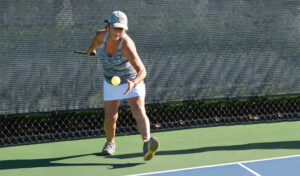
- Practice different serves: Develop proficiency in both volley and drop serves. Being able to switch between the two can keep your opponents guessing and make it harder for them to anticipate your serves.
- Maintain a consistent motion: Consistency is key when it comes to serving. Work on developing a repeatable serving motion that feels comfortable and natural to you. This will help you serve more accurately and avoid faults.
- Deception is key: While you can’t change your serving motion, you can still use deception to your advantage. Experiment with adding different types of spin to your serves, or varying your serve placement. Keeping your opponents off balance can lead to weaker returns and easier points.
- Target your opponent’s weaknesses: Pay attention to your opponent’s strengths and weaknesses. If they struggle with deep serves, aim for the back of the service court. If they have trouble with wide serves, target the sidelines. Exploiting your opponent’s weaknesses can give you a strategic advantage.
- Vary your serve speed: Mixing up the speed of your serves can also be effective. Throwing in an occasional slow serve can disrupt your opponent’s timing, while a fast serve can catch them off guard. Just be sure not to sacrifice accuracy for speed.
FAQ about Legal Serves in Pickleball
To wrap up, let’s address some frequently asked questions about legal serves in pickleball.
Q: Can you serve overhand in pickleball?
A: No, serves must be hit underhand in pickleball. Overhand serves are not allowed.
Q: What happens if the ball touches the net on a serve?
A: If the ball touches the net on a serve but still lands in the correct service court, it is considered a “let” serve. The server gets to re-serve, and the fault doesn’t count against them.
Q: Can you serve to any part of the court?
A: No, serves must be hit diagonally crosscourt, from your service court to your opponent’s service court.
Q: How many serve attempts do you get?
A: In pickleball, you only get one serve attempt. If you commit a fault on your serve, you lose the point.
Q: What is a “let” serve, and when is it allowed?
A: A “let” serve is a serve that hits the net but still lands in the correct service court. Let serves are allowed in pickleball, and the server gets to re-serve without the fault counting against them.
Q: Can you serve sidearm?
A: As long as your serve is underhand and your paddle makes contact with the ball below the waist, a sidearm serve is allowed. However, sidearm serves can be more difficult to control and are less common in pickleball.
Q: How high can I drop the ball on a drop serve?
A: There is no official rule on how high you can drop the ball on a drop serve. However, most players drop the ball from around waist height to maintain control and consistency.
Conclusion
Congratulations! You’ve made it through our comprehensive guide to legal serves in pickleball. By now, you should have a solid understanding of what constitutes a legal serve, the different serving styles, common faults to avoid, and strategies for elevating your serves.
Remember, a good serve is the foundation of a strong pickleball game. It can put you in an offensive position right from the start and set the tone for the rest of the rally. So, take the time to practice your serves, experiment with different techniques, and most importantly, have fun!
Pickleball is a game of skill, strategy, and sportsmanship. By mastering the art of the legal serve, you’ll be well on your way to becoming a formidable player on the court. So get out there, start serving, and enjoy the wonderful world of pickleball!
We hope you found this guide helpful and informative. If you have any other questions about legal serves or pickleball in general, feel free to ask in the comments. And if you know someone who could benefit from this information, don’t hesitate to share this post with them.
Happy pickling!

